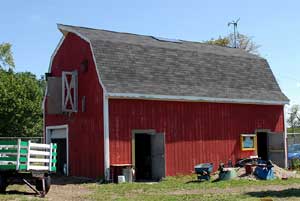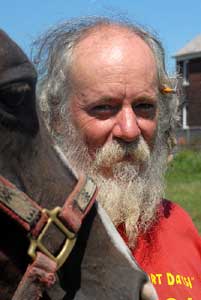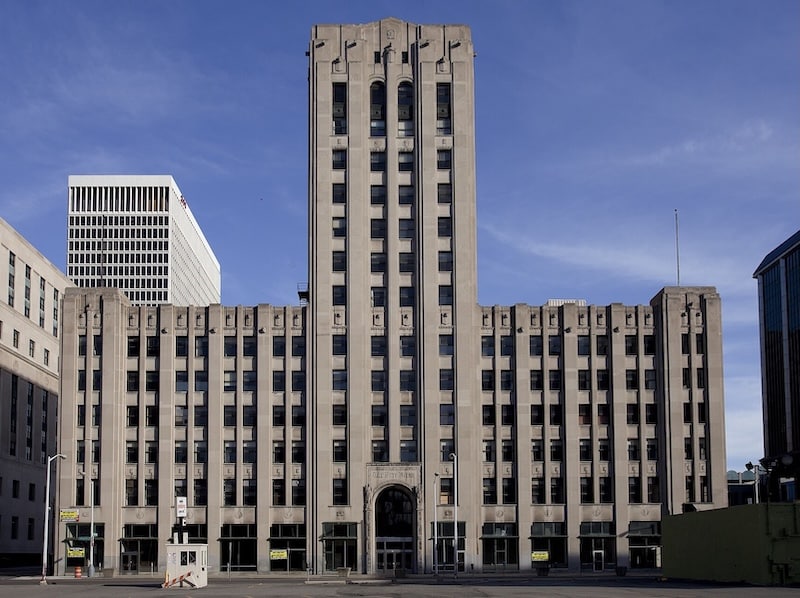How Detroit’s Gardens Grow
Kelli B. Kavanaugh looks at how underutilized, abandoned green spaces have become community gardens and even working farms in her second installment of her series on living green in the Motor City.
Editor’s note: This is the second installment of a series looking at sustainability in Detroit. If you missed the first, click here.
Considering just how much vacant land there is in Detroit — 28,000 parcels owned by the city alone, according to the City of Detroit’s Planning and Development Department — it may very well take some radical concepts to again make use of it all. While there is always value in the optimist’s perspective that some day each and every one of Detroit’s thoroughfares will again be lined with bustling shops, a pragmatist may ask, “Have you driven West Warren all the way to the city limits lately?”
 It is politician’s ad-hoc devotion to plowing ahead as if Detroit’s decline is ever-temporary (for more than 50 years!) that leaves the city bailing out a leaky raft. Many solutions that may help to solve its elementary problem — too much land and too few people — may be controversial (i.e., vacating and cutting off city services to entire neighborhoods — can you imagine the swift political death of an elected official who proposed such a plan?). But such ideas deserve to, at a minimum, be talked about and debated in public forums.
It is politician’s ad-hoc devotion to plowing ahead as if Detroit’s decline is ever-temporary (for more than 50 years!) that leaves the city bailing out a leaky raft. Many solutions that may help to solve its elementary problem — too much land and too few people — may be controversial (i.e., vacating and cutting off city services to entire neighborhoods — can you imagine the swift political death of an elected official who proposed such a plan?). But such ideas deserve to, at a minimum, be talked about and debated in public forums.
Such is the case with urban farming. On one hand, it may seem an innocuous use of small, forgotten parcels. Yet, when looked at from a macro-scale, as in the concerted decision to create farmland on underutilized acreage with the intent to produce food for resident consumption — that’s when the political batteries get all charged up.
Regardless of the politics, there are groups and individuals all around the city who have begun to use vacant land — some privately owned, some city-owned — as personal gardens, community gardens and even full-scale farm operations.
Greening together
When Farm-A-Lot — a city-sponsored program that provided seeds and tilling free-of-charge to residents — hit the dirt, several of the city’s most active “green” organizations came together to fill the void. These organizations, Greening of Detroit, Detroit Agricultural Network (DAN), Michigan State University Extension and Earthworks Urban Farm, banded together as the Detroit Garden Network. Greening of Detroit’s Ashley Atkinson notes that a “USDA Food Security Grant in 2004 [enabled us to] formalize our partnership.”
 Each group brings its urban gardening partners one piece of the puzzle needed to get started and keep going — for example, MSU Extension hosts educational courses and Earthworks provides gardens with start-up seeds and transplants. “Each group plays a different role, and it fits into each group’s [individual] mission,” says Lindsay Turpin, who works with DAN.
Each group brings its urban gardening partners one piece of the puzzle needed to get started and keep going — for example, MSU Extension hosts educational courses and Earthworks provides gardens with start-up seeds and transplants. “Each group plays a different role, and it fits into each group’s [individual] mission,” says Lindsay Turpin, who works with DAN.
The Garden Network has pooled together gardeners by geographic cluster (there are 10 in the city, click here), allowing gardeners within each cluster to coordinate workdays, pool resources, and, as Atkinson points out, “share advice, inspiration, ideas and pep talks. We’re building a citywide network within neighborhoods, and that’s a big change.”
Currently, five of the city’s 10 clusters have leaders and centers, where gardeners can check out tools and pick up compost. Billy O’Bryan, an AmeriCorps volunteer with the Garden Network asserts, “every cluster has enough gardeners to support a lead, and each one has its own strengths and weaknesses. Every scenario needs its own [cluster center].”
The centers promote interaction among gardeners, says Turpin. “They depend on each other rather than us giving away resources.” She says the Garden Program services about 150 family gardens and 100 community gardens.
Nurturing communities
Each September, DAN gives a citywide tour of selected examples of these community gardens, which can range in size from a few raised beds to multiple acres.
 O’Bryan works specifically with the Cluster 4 Center, a two-acre farm that is associated with Detroit Public School’s Katherine Ferguson Academy, a school for mothers-to-be and mothers. Its flexible curriculum, parenting classes and nursery care is designed to provide a supportive environment to enable young mothers to attend high school.
O’Bryan works specifically with the Cluster 4 Center, a two-acre farm that is associated with Detroit Public School’s Katherine Ferguson Academy, a school for mothers-to-be and mothers. Its flexible curriculum, parenting classes and nursery care is designed to provide a supportive environment to enable young mothers to attend high school.
The farm is the brainchild of life science teacher Paul Weertz, whose concept evolved from a realization that the chemically preserved samples traditionally used to teach biology “would not be good for pregnant students.” Starting with just a few live animals and small gardens, Weertz’s vision has grown to a holistic curriculum based on the working of a farm.
A home repair class built the barn, which is powered by a wind turbine and solar collectors. Students plant and maintain garden plots in pairs, participate in a group research project designed around the workings of the farm, and individually “mother” a chicken egg. Weertz explains, “The egg is your baby. When the egg is in the incubator, you have to turn it two to three times a day and monitor its moisture content and temperature. Then you have to teach the chick to peck for food and find water.”
The farm’s menagerie is rounded out with goats, sheep, horses, bunnies, chickens, ducks, turkeys, bees and worms, each of which receive some amount of animal husbandry from students throughout the school year. “Care for animals integrates into your own life,” Weertz says. “We think that the responsibility involved ties into care for your children.”
 Selling the food they have grown at market brings the students lessons in accounting and marketing, as well as awareness of nutrition and the real cost of food.
Selling the food they have grown at market brings the students lessons in accounting and marketing, as well as awareness of nutrition and the real cost of food.
O’Bryan manages an additional network of volunteers from the community who keep the goats milked, work a share of the harvest, and “watch the barn when no one is here.”
In this way, then, the Garden Program not only helps the gardeners but nurtures and strengthens the surrounding community, as well.
Photos:
Katherine Ferguson Academy Farm and Billy O’Bryan Photos Copyrght Dave Krieger




